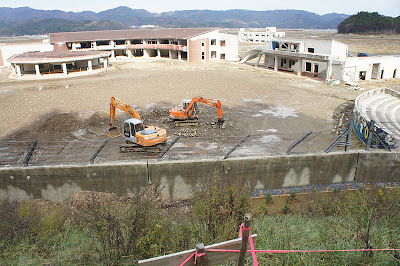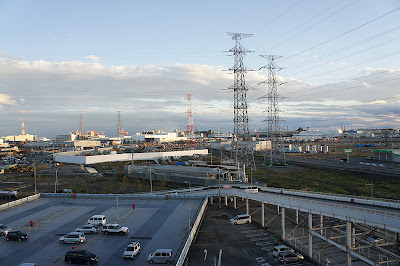A Japanese Christmas
Anette
9:57:00 AM
Christmas is not really celebrated in the same way as we do in Western countries, which actually isn't that strange considering most Japanese either consider themselves Buddhist, Shintoists or both. However, a lot of Japanese people has adopted Christmas as a non-religious event, and made it into their own. For instance, a lot of Japanese think that Kentucky Fried Chicken is a typical Christmas dinner, and recent years it has become so popular that you might have to reserve in advance if you want to secure some KFC for Christmas.. Further, a lot of families also celebrate with a spongecake with whipped cream and decorated with strawberries. I really had a hard time understanding how a cake could be the main dish on a Japanese Christmas menu, but apparently the white cream and the red strawberries make the cake look christmassy to Japanese people..(?)
Another thing that is totally different, is that Christmas is regarded as a day to be spent with your boyfriend/girlfriend. Actually, I find the Japanese New Year to be a lot more similar to Western Christmas, since this day is more of a family day.
For instance, for Christmas last year me and my boyfriend went to a restaurant and had omurice (in simple terms an omelette with rice in it) before we went to see the film Norwegian Wood based on the book with the same name by Haruki Murakami. In other words, totally different from any of my previous Christmases I've ever had!
After the movie we also took purikura, which is Japanese photo stickers you can decorate after the pictures have been shot. The funny thing is that the photo booths also gives the pictures some extra effects, such as making your hair look lighter and your eyes look bigger. Even though it makes us look a bit strange I have to say that I really love this picture, it is just so funny..
And now it is time for my second Christmas in Japan. This time Christmas is on a Saturday, which means that unlike last year I don't have to go to school!! Lucky.. Normally you can't expect to get the day off when it's Christmas if you are a student (and especially not at Ritsumeikan!)
Also, it seems that I'll be having a Christmas date this year too:). And the best way to spend Christmas, is to spend it with somebody you care about. I'm sure this Christmas will be great too!
Of course I miss my family though. I hope all of you are having a delightful holiday!
Merry Christmas everybody!
Another thing that is totally different, is that Christmas is regarded as a day to be spent with your boyfriend/girlfriend. Actually, I find the Japanese New Year to be a lot more similar to Western Christmas, since this day is more of a family day.
For instance, for Christmas last year me and my boyfriend went to a restaurant and had omurice (in simple terms an omelette with rice in it) before we went to see the film Norwegian Wood based on the book with the same name by Haruki Murakami. In other words, totally different from any of my previous Christmases I've ever had!
 |
| Purikura from my Christmas celebration 2010. |
And now it is time for my second Christmas in Japan. This time Christmas is on a Saturday, which means that unlike last year I don't have to go to school!! Lucky.. Normally you can't expect to get the day off when it's Christmas if you are a student (and especially not at Ritsumeikan!)
Also, it seems that I'll be having a Christmas date this year too:). And the best way to spend Christmas, is to spend it with somebody you care about. I'm sure this Christmas will be great too!
Of course I miss my family though. I hope all of you are having a delightful holiday!
Merry Christmas everybody!












































































